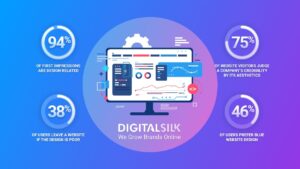The Impact of 4K Resolution on Interactive Learning Experiences
In today’s education landscape, technology is no longer a luxury but a necessity. As classrooms evolve into smart learning environments, the quest for better visual and interactive tools is at an all-time high. Among the innovations shaping modern education, 4K resolution technology stands out. With four times the pixels of standard HD, 4K resolution delivers breathtaking clarity and precision, redefining how students and teachers interact with digital content.
This article delves into how 4K resolution enhances interactive learning experiences, boosts engagement, and transforms the dynamics of online and in-person education. We will also explore how it impacts online teaching setups and what equipment for teaching online can leverage this technology most effectively.
What is 4K Resolution?
Before diving into its educational impact, it’s important to understand what 4K resolution entails. 4K, also known as Ultra High Definition (UHD), refers to a display resolution of approximately 3840 x 2160 pixels. This level of detail creates highly vivid and sharp images, offering a much more lifelike and immersive experience than traditional Full HD (1920 x 1080).
In educational contexts, 4K resolution elevates how information is displayed — from detailed maps and scientific diagrams to art critiques and coding interfaces — making learning richer and more accessible.
The Shift Towards Visual-Centric Learning
Modern education has witnessed a profound shift towards visual-centric teaching methodologies. Research shows that visual information is processed 60,000 times faster by the brain compared to text. Therefore, clarity, detail, and fidelity of visuals directly influence the efficiency of knowledge transfer.
A 4K display provides exceptional detail, ensuring that even the smallest text, figures, and design nuances are visible from any seat in the room or through a virtual connection. This is a game-changer for fields such as engineering, medicine, architecture, and graphic design, where precision is paramount.
Moreover, in an online teaching setup, students often suffer from compressed video quality or blurry images. Upgrading to 4K resolution minimizes such issues, enabling teachers to deliver highly effective remote lectures and demonstrations without loss of visual integrity.
Enhancing Interactive Flat Panels and Smart Boards
Interactive flat panels (IFPs) and smartboards are critical tools for modern classrooms and virtual education. Incorporating 4K resolution into these devices offers a tangible upgrade in usability.
Imagine a biology lesson where students explore cellular structures on an interactive panel. With 4K resolution, the smallest components come alive in stunning detail, allowing for pinch-to-zoom exploration without pixelation. Annotation tools also become more precise, encouraging greater collaboration and inquiry.
Furthermore, 4K displays enhance the touch sensitivity and responsiveness of these devices. When students interact with an IFP featuring 4K technology, the system can capture minute inputs with far greater accuracy, which is particularly vital for creative subjects like digital art, architecture, and design courses.
Upgrading equipment for teaching online to 4K-capable interactive displays ensures that students receive an engaging and authentic learning experience, regardless of their location.
Boosting Student Engagement
Maintaining students’ attention in a physical or virtual classroom is one of the biggest challenges educators face today. High-definition visuals provided by 4K displays naturally capture and hold students’ attention better than standard displays.
Immersive graphics, clear texts, and realistic simulations can trigger curiosity and facilitate deeper cognitive engagement. Students are more likely to participate actively when they can see fine details in videos, read every word on a slide effortlessly, and interact seamlessly with visual content.
In online teaching setups, particularly, this boost in engagement is critical. Many students find online learning monotonous due to poor visual quality or laggy presentations. 4K visuals significantly counteract this issue, offering a rich, immersive experience that keeps students focused longer.
Facilitating Inclusive Learning
Inclusive education aims to cater to the diverse needs of all students, including those with disabilities. 4K resolution can play an essential role here by:
- Assisting visually impaired students through sharper, more readable content.
- Enhancing sign language interpretation through crisper video feeds.
- Improving captioning clarity for students with hearing impairments.
- Supporting cognitive learning disabilities by presenting organized, easily distinguishable visual content.
Thus, incorporating 4K displays into equipment for teaching online and offline empowers teachers to create learning environments that are truly inclusive and accessible to all students.
Elevating Virtual Reality (VR) and Augmented Reality (AR) in Education
Virtual Reality (VR) and Augmented Reality (AR) are rapidly gaining ground in educational institutions. However, the effectiveness of VR/AR heavily depends on the resolution of the display system.
4K displays provide the resolution needed to eliminate the “screen door effect” — a phenomenon where users can see the fine lines separating pixels in VR, breaking immersion. Higher resolution also ensures that virtual models in medical training, engineering simulations, and historical recreations appear vivid and lifelike.
With an enhanced online teaching setup that integrates 4K-compatible VR and AR systems, institutions can offer students groundbreaking educational experiences that transcend the limitations of traditional classrooms.
Better Remote Collaboration and Group Learning
Group projects, brainstorming sessions, and collaborative learning are integral parts of modern education. 4K resolution supports these activities by ensuring that shared screens, video calls, and collaborative documents are displayed in maximum clarity.
Students working on a group assignment via video conferencing tools can share highly detailed visuals, spreadsheets, and project boards without sacrificing clarity. Teachers can better monitor participation and comprehension through crystal-clear video feeds.
For those investing in equipment for teaching online, it’s essential to prioritize devices capable of supporting 4K video calls, document sharing, and collaboration software to achieve optimal learning outcomes.
Key Considerations When Integrating 4K into Educational Settings
While the advantages of 4K technology are compelling, educators and administrators must consider several factors to maximize its benefits:
- Bandwidth Requirements: Streaming 4K content requires a stable and fast internet connection. Schools should ensure their network infrastructure can handle this.
- Hardware Compatibility: Older laptops, projectors, and media players may not support 4K output. Equipment upgrades might be necessary.
- Content Availability: Not all educational content is available in 4K. Institutions should invest in creating or sourcing high-resolution learning materials.
- Cost Considerations: 4K technology is more affordable now than ever, but budget planning is still crucial to manage the transition effectively.
Nonetheless, for institutions serious about providing superior interactive learning experiences, these investments offer a substantial return.
Future Trends: Where is 4K Education Headed?
The future of education is undeniably intertwined with advancements in display technologies. As 4K becomes more mainstream, new trends are emerging:
- 8K on the Horizon: Some institutions are already exploring 8K displays for ultra-advanced learning simulations.
- AI-Enhanced Learning: 4K displays paired with AI-driven adaptive learning platforms can create hyper-personalized educational journeys.
- Interactive Content Creation: Teachers and students alike are beginning to create 4K content themselves, further enhancing engagement.
Upgrading equipment for teaching online to incorporate 4K displays and cameras will be an essential step in staying ahead in a rapidly evolving educational environment.
Conclusion
The integration of 4K resolution into education isn’t just a luxury—it’s becoming a necessity for institutions that want to provide the best possible learning experiences. Whether in a smart classroom or an online teaching setup, the enhanced clarity, engagement, accessibility, and interactivity enabled by 4K are reshaping education as we know it.
For educational leaders and policymakers, the message is clear: embracing 4K technology is not merely about keeping up with trends; it’s about investing in the future of effective, inclusive, and dynamic learning. By choosing the right equipment for teaching online and in classrooms, institutions can ensure they are not just teaching — they are inspiring the next generation of learners.













